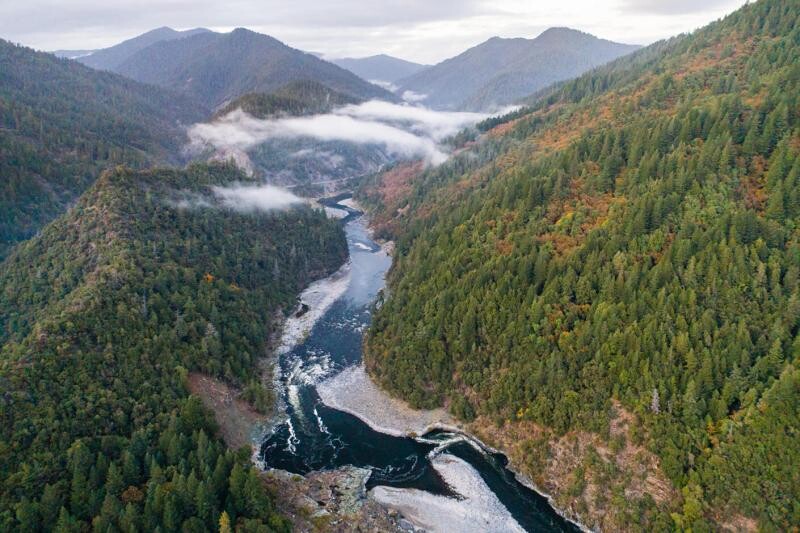After years of planning, the Klamath River has finally been reconnected to the Pacific, setting the stage for salmon to reclaim over 400 miles of their historic habitat. This week’s removal of the last cofferdam marks a pivotal moment where environmental resilience meets collaboration among tribes, agencies, and the Klamath River Renewal Corporation. With sediment carefully managed to protect fish, this effort signals a new chapter for the river’s ecosystem and provides a hopeful future.
Heavy equipment removed the final obstacle separating the Klamath River from the Pacific Ocean in the first week of October. The reconnected river was turbid but remained safe for fish after crews took steps to avoid erosion and impacts on water quality.
“These final dam removal steps set the stage for salmon to return to reclaimed habitat and expand their population recovery said Jim Simondet, NOAA Fisheries West Coast Region Klamath Branch Supervisor.
NOAA Fisheries analyzed the impacts of dam removal on Endangered Species Act-listed species in a biological opinion. That analysis found that the short-term impacts, such as the potential effects of sediment in the water on salmon, would be outweighed by the much greater long-term benefits as river ecosystem processes return at a landscape scale. The project will reopen more than 400 miles of habitat to salmon, steelhead, and lamprey.
The final step in removing the Klamath dams involved dismantling a final cofferdam that temporarily diverted the river to allow for deconstruction activities.
Before that step, NOAA Fisheries convened a forum called the Fisheries Coordination Team to discuss how to protect fish and water quality best. It included experts from tribes, states, and other federal agencies. The team provided technical recommendations to manage water quality impacts, such as those observed when the reservoirs were initially drained earlier in the year. Crews released sediment and organic material that muddied the river but avoided a decline in dissolved oxygen that could have otherwise harmed fish.
The Coordination Team developed recommendations for the Klamath River Renewal Corporation, which is responsible for completing the dam removal project. The team advised the KRRC to consider using methods that would release the material in a controlled way prior to the complete removal of the cofferdam.
“The network of water quality monitoring sites managed by the tribes are providing real-time data to the Fisheries Coordination Team, allowing them to manage sediment inputs and adaptively manage fisheries needs during the final removal process,” said Toz Soto, Fisheries Program Manager for the Karuk Tribe.
The KRRC followed the recommendation to remove sediment and organic material from behind the cofferdam before the dam was fully removed. That resulted in a slower release of the material. The Fisheries Coordination Team will hold weekly check-ins to track extensive water quality monitoring up and down the river.
“Our goal was to provide a forum that allowed for transparent sharing of information, collection of observations, and recommendations from experts who live and work on the river,” said Shari Witmore, a fisheries biologist in NOAA Fisheries West Coast Region’s Klamath Branch. “Leaning on the advice of our partners, we were able to minimize impacts to fish in the Klamath River during the final step of dam removal.”
“Given all the complexities and details necessary to remove the four dams, the work has gone pretty smoothly and commensurate with our expectations,” Simondet said. “That is a testament to the hard work and expertise of the KRRC and its contractors and the planning we all contributed to ahead of time to get this right.”
Read more at NOAA Fisheries.







